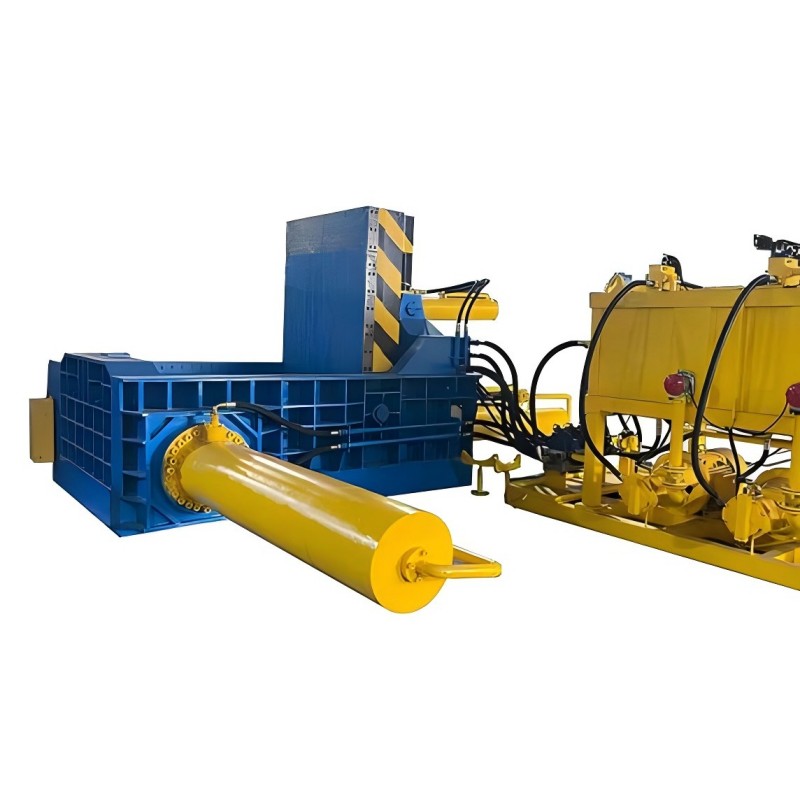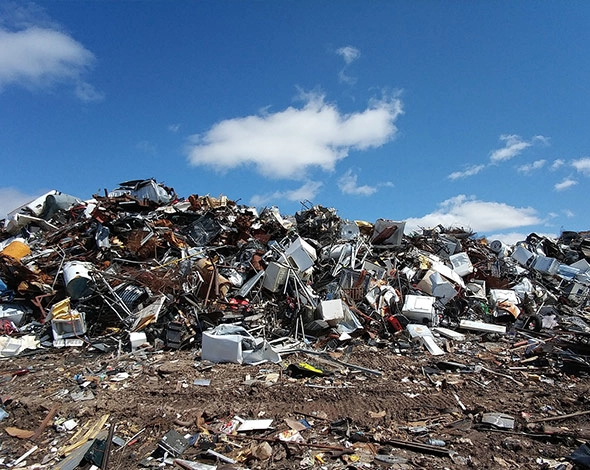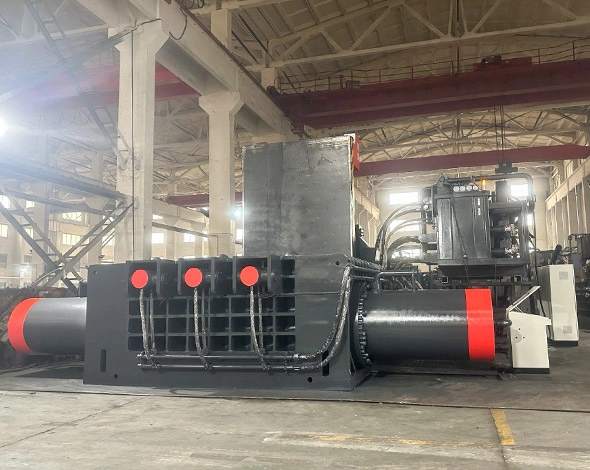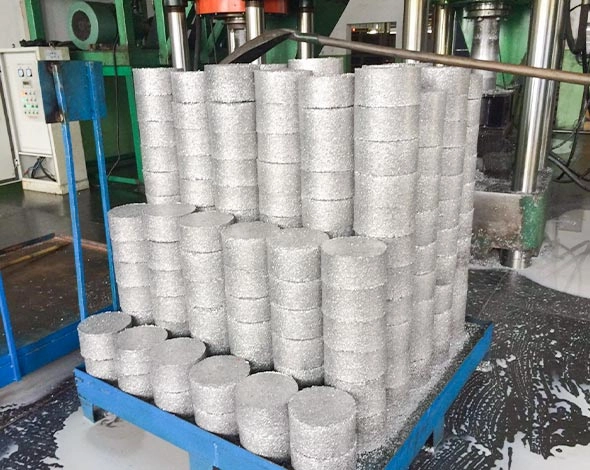Metal balers are essential in recycling and waste management, compressing scrap metal to reduce storage and transportation costs. They support environmental sustainability by enabling efficient metal recycling. Ensuring the upkeep of these machines is vital for their durability, performance, and safe operation.
This article will outline eight essential tips for maintaining metal balers, focusing on inspection, lubrication, hydraulic system care, and more.

1. Regular Inspection and Cleaning
The Significance of Regular Inspections
Regular inspections are fundamental to proper maintenance. By routinely checking your metal baler, you can spot possible concerns before they become serious ones. These inspections assist in identifying wear and tear, misalignments, or any other discrepancies that could affect the machine’s performance or safety.
Areas to Focus on During Inspections
When conducting routine inspections, pay close attention to the following areas:
- Structural Integrity: Inspect the baler’s frame and compression chamber for cracks, rust, or any deformities.
- Hydraulic Systems: Check hydraulic hoses, fittings, and cylinders for leaks or any indications of wear.
- Belts and Chains: Verify that all belts and chains are undamaged and correctly tensioned.
- Electrical Systems: Look for evidence of wear or damage on the control panels, switches, and wiring.
- Safety Mechanisms: Test all safety features to ensure they are functioning correctly.
2. Lubrication of Moving Parts
Maintenance-free operation of the metal baler depends on proper lubrication since it minimizes wear and friction. Here’s a breakdown of the lubricants and techniques that should be employed:
Types of Lubricants to Use
- Grease: Every 40–50 hours of operation, grease is recommended for bearings, gears, and chains.
- Oil: Use on hydraulic components and pistons; check levels weekly and top up as needed.
- Dry Lubricants: Suitable for areas exposed to dust and debris; apply every 100 hours to avoid build-up.
- High-Temperature Lubricants: For components exposed to excessive heat, like motors and hydraulic pumps; inspect and reapply every 80 hours of use.
3. Hydraulic System Maintenance
Hydraulic systems are the powerhouse of metal balers, providing the force needed to compress metal. Maintaining baler efficiency and preventing system breakdowns require routine maintenance.
Steps to Maintain Hydraulic Systems
- Check fluid levels regularly and top up with the appropriate hydraulic fluid.
- Check hydraulic connections and hoses for wear, cracks, and leaks.
- Replace hydraulic filters every 500 hours of operation to maintain fluid cleanliness.
- Regularly flush the system to get rid of any air that may have become trapped in the hydraulic lines.
- Make sure that the hydraulic pump is running within the pressure range that the manufacturer recommends.
Common Problems to Look for and Their Solutions
- Fluid Leaks: Often caused by worn hoses or loose connections. Solution: Replace damaged hoses and tighten connections.
- Overheating: This may result from low fluid levels or clogged filters. Solution: Check fluid levels, replace filters, and ensure proper ventilation.
- Slow Operation: This could indicate air in the hydraulic system or a failing pump. Solution: Bleed the system and check the pump for efficiency.
4. Belt and Chain Tension
Chains and belts are essential to the baler’s operation because they distribute power from the motor to other parts. For optimum performance, the right tension must be maintained.
The Significance of Proper Belt and Chain Tension
Incorrect tension can lead to inefficiencies and mechanical failures. Over-tightened belts and chains can cause excessive wear on bearings and motors, while loose ones may slip, reducing the baler’s operational efficiency.
How to Adjust and When to Replace
- Adjustment: Regularly check the tension with a tension gauge. Adjust as necessary by loosening the tensioner pulley and resetting it in accordance with the manufacturer’s recommendations.
- Replacement: If belts and chains exhibit signs of severe wear, fraying, or cracking, replace them. Typically, belts and chains should be replaced every 1,000 to 1,500 hours of operation.
5. Check and Replace Worn Parts
Preventing unplanned breakdowns and preserving the baler’s efficiency requires the identification and replacement of worn parts.
Identifying Worn Parts in Metal Balers
Key components to monitor for wear include:
- Cutting Blades: Look for dullness or chips, which can reduce cutting efficiency.
- Bearings: Check for grinding noises or excessive play, indicating wear.
- Seals and gaskets: Check for leaks or cracks, as these might cause a loss of hydraulic fluid.
- Rollers and Guides: Ensure they are free from cracks and that they roll smoothly.
Guidelines for Checking and Replacing Them
- Cutting Blades: Sharpen or replace when they no longer produce clean cuts.
- Bearings: Replace if they exhibit noise or excessive movement.
- Seals and Gaskets: Replace during every major service or if leaks are detected.
- Rollers and Guides: Replace if they are cracked or do not rotate freely.
6. Safety Mechanism Inspection
Safety features are critical for protecting operators and ensuring compliance with industry regulations. Regular inspection of Metal Balers these mechanisms is non-negotiable.
Synopsis of The Safety Features
Metal balers have a number of safety features, such as:
- Emergency Stop Buttons: Give operators the ability to immediately stop working in an emergency.
- Interlock Systems: Prevent the baler from operating if safety doors are open.
- Safety guards: shield operators from potential dangers such as moving parts.
- Overload Protection: Activates an automatic shutdown if the machine surpasses its operational limits.
Routine Inspections to Ensure Compliance with Safety Requirements
- Emergency Stop Buttons: Test monthly to ensure they halt operations immediately.
- Interlock Systems: Inspect bi-weekly to verify that the baler will not operate if doors are open.
- Safety Guards: Check daily for damage or dislodgement.
- Overload Protection: Test quarterly to ensure it activates correctly under excessive load.
7. Electrical System Inspections
The electrical system regulates every aspect of the baler’s operation, acting as its central nervous system. Regular inspections are necessary to avoid malfunctions.
Key Electrical Components that Need to Be Monitored
- Wiring: Check for frayed or exposed wires.
- Switches: Ensure all switches function smoothly and reliably.
- Control Panels: Inspect for signs of wear or damage, and clean to prevent dust build-up.
- Relays and Fuses: Test for proper operation and replace if faulty.
- Motors: Monitor for unusual noises or overheating.
To avoid risks, electrical maintenance should only be done by certified technicians. Ensure the machine is powered down before any inspection or maintenance work. Regularly update electrical diagrams and labels to aid in troubleshooting. Replace any faulty components immediately to prevent cascading failures.
8. Record Keeping and Documentation
Keeping detailed records of maintenance activities ensures that nothing is overlooked and helps in planning future maintenance schedules.
How to Effectively Record Maintenance Activities
- Use Digital Logs: Maintain an electronic logbook where every maintenance activity is recorded with the date, time, and details of the work performed.
- Regular Updates: Ensure logs are updated immediately after maintenance is completed.
- Photographic Records: Take before and after photos of major maintenance activities for reference.
The Importance of Maintenance Logs for Operational Continuity
Maintenance logs are essential for tracking the health of the baler over time. They offer a historical record that is useful for planning preventative maintenance and identifying reoccurring problems. Moreover, in case of an unexpected breakdown, detailed logs can expedite troubleshooting by providing insights into past repairs and component replacements.
Conclusion
Maintaining metal balers is essential for their longevity, efficiency, and safety. By following the tips outlined in this article, you can ensure that your balers remain in top working condition, minimizing downtime and maximizing productivity.



